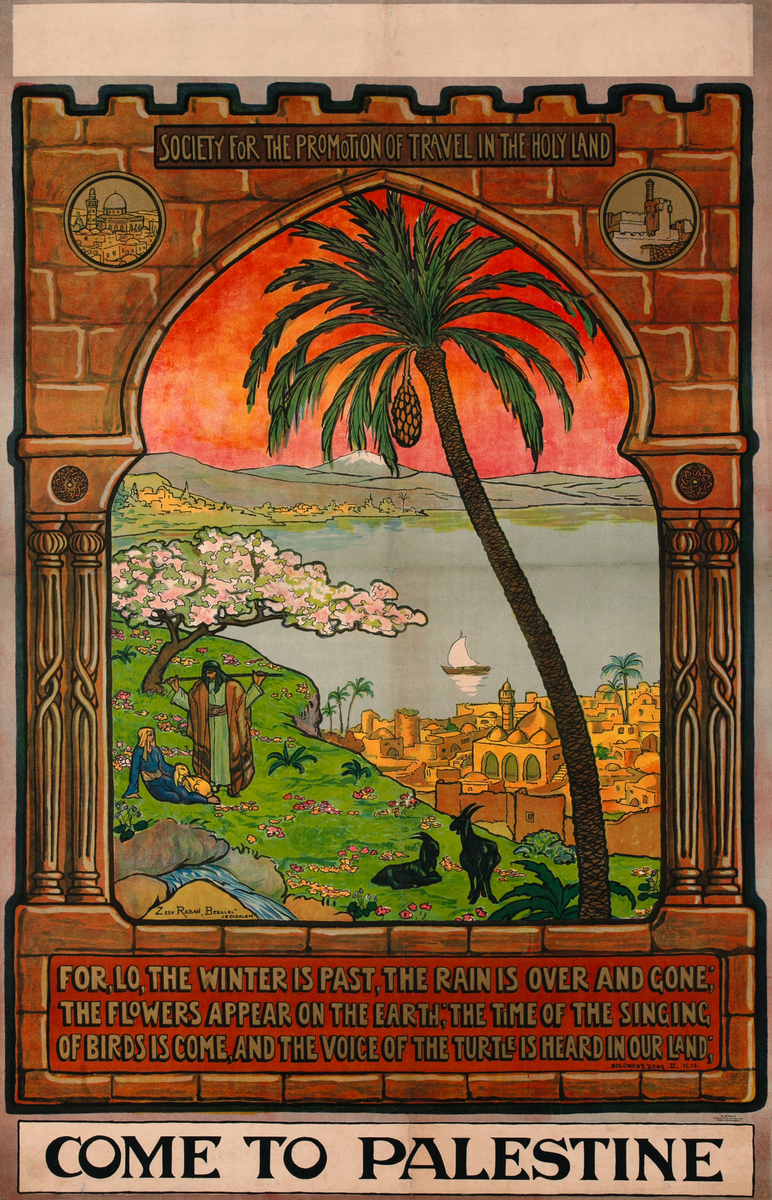
Come to Palestine Original Travel Poster
- ca 1930
- Ze'ev Raban 1890 - 1970
-
25 x 39 inches ~ (63 x 99 cm)$18,500
- Linen backed
Linen backing is the industry standard of conservation. Canvas is stretchered and a sheet of acid free barrier paper is laid down. The poster is then pasted to the acid free paper using an acid free paste. This process is fully reversible and gives support to the poster. A border of linen is left around the poster and can be used by a framer to mount the poster so that nothing touches the poster itself.
The price of this poster includes linen backing.
- Add to Cart Add to Wishlist E-Mail Us About This Poster
Extremely rare and wonderful early poster for travel to Palestine, the Holy Land. Please note slight old horizontal and vertical fold lines.
"For, lo, the winter is past, the rain is over and gone; the flowers appear on the earth; the time of the singing of birds is come, and the voice of the turtle is heard in our land;" - Song of Songs (2:11-12).Published by the Society for the Promotion Travel in the Holy Land.
Upon his arrival in Jerusalem in 1912, Ze'ev Raban was invited to join the faculty of The Bezalel School of Arts and Crafts by its founder, Boris Schatz. There he worked as director of the repousse workshop and as teacher of anatomy and decorative arts. He also served as principal designer for the applied art studios, where carpets, metalwork, ceramics, and woodwork were made for the commercial market. Raban was much influenced by the Art Nouveau and Symbolism he had seen in Munich, Brussels, and Paris, where he studied sculpture and decorative arts. These influences played a significant part in Raban's personal style, which in turned helped define what came to be known as the Bezalel style.
This poster, which features an Orientalist scene of a shepherd and his beloved in a bountiful landscape within an architectural frame of an arabesque horseshoe arch, was aimed at attracting tourists to the Land of Israel. It was designed to speak to a Christian audience as much as to Jews of the Diaspora, as can be seen in Raban's choice to set the timeless idyll on the shores of the Sea of Galilee. In the distance, framed by the blooming almond tree and date palm heavy with fruit, is the snowy peak of Mount Hermon. The verse from the Song of Songs (2:11-12) set in the stones of the frame strengthens the connection to the land of the Bible. All these elements symbolize renewal and the coming of spring, emblematic of the burgeoning Zionist society.
The symbolic language of this poster – the idyllic and timeless landscape untouched by modern society, the Oriental (Arab) dress and architecture, the Biblical verse and setting – was part of the ideology and aesthetic of the early Zionist movement, which aimed to strengthen the physical connection of the Jewish people to the Land of Israel.
Please note slight toning to original fold lines.



